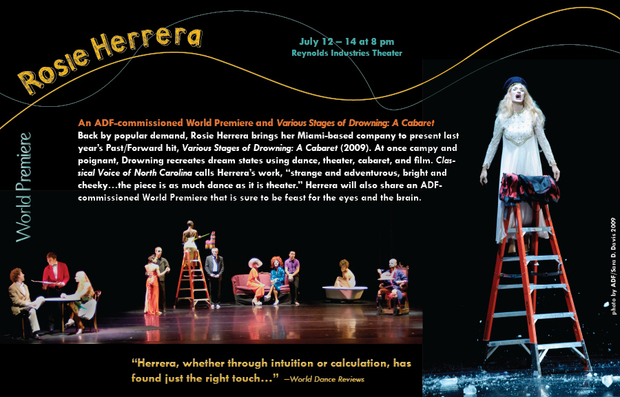
Placing Miami in American Dance
For the past week I have been in Durham, North Carolina at the American Dance Festival for an institute for dance critics hosted by the National Endowment for the Arts. In fact, there are two Miami-based critics here, me and Miami Artzine columnist and choreographer Letty Bassart.
But where does Miami fit into the landscape of American dance? We’re all very proud that dancer and choreographer Rosie Herrera has been invited back to ADF for a second year in a row, this time to present a full-evening of her work with her dancers — along with the likes of Shen Wei Dance Arts and the Paul Taylor Dance Company.
It’s still a bit of a hike from Durham, North Carolina to New York City, though, the center of American dance – and the people who make opinion about it. During an early session at the critic’s institute, I was struck by the characterization of American dance presented by master critic Roslyn Sulcas of the New York Times. Distinguishing American dance from European dance, Sulcas pointed to two big factors: the Europeans have more funding, which leads to more lavish productions and the Europeans tend toward more intellectual, high concept theatrical work.
Fair enough, as long as you’re referring to that part of the United States that doesn’t include Miami. As usual, the Magic City stands out — and stands much closer to the Europeans. Miami has marginally more funding for choreographers than the rest of the country, what with the County’s individual grants and the Knight Foundation’s largesse.
What really sets us apart from the rest of the country though is the strong influence of Europe and Latin America (often Europe via Latin America) which gives our local choreographers a strong dose of high concept, intellectual, theatricality. Rosie Herrera is a case in point. Hopefully she will not be the last Miami choreographer to show the rest of the world a different profile for American dance.
Recent Content
-
Artsarticle ·
-
Artsarticle ·
-
Artsarticle ·

